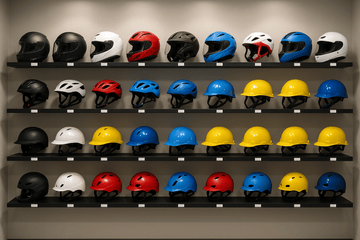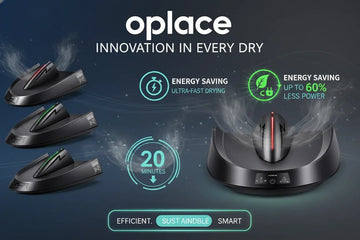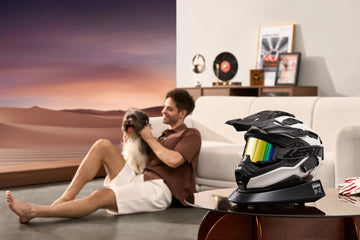Drying Time Curves by Helmet Type: Full-Face, Modular, Ski, Football, Cycling
Shop my low-heat helmet-dryer setup
I track drying time after rides because odor doesn’t care about seasons. With low-heat (≤48 °C) directed airflow and quiet operation (~35 dB), I can hit a reliable 20–40 minutes for sweaty liners, and 1–2 hours when they’re drenched. The trick is matching placement and flip points to each helmet type so airflow reaches the dampest pockets first.

At-a-glance time ranges
| Helmet type | Sweaty (post-ride) | Drenched (rain/washed) | Recommended placement | Flip point | Extras |
|---|---|---|---|---|---|
| Full-face | 25–40 min | 60–120 min | Crown-down on the stand; visor open | Halfway for drenched pads | Pop cheek pads if waterlogged |
| Modular | 25–40 min | 60–120 min | Crown-down; chin bar fully opened | Halfway for drenched pads | Check hinge areas for moisture |
| Ski / Snowboard | 30–45 min | 60–120 min | Crown-down; vents open | After 20–30 min | Ear pads need extra time |
| Football / Hockey | 40–60 min | 90–150 min | Crown-down; face opening toward airflow | At 45–60 min | Rotate once more for jaw/chin pads |
| Cycling (road / MTB) | 15–25 min | 40–90 min | Crown-down; pads slightly pulled | Optional for drenched pads | Keep temps low for EPS & glue |
How to place each helmet for even, fast drying
Full-face
Set the shell crown-down so warm air rises through brow and cheek pads. Keep the visor open. If the cheek pads are soaked, remove and stand them on the rack edges for 20–30 minutes, then reassemble for the last pass. This prevents clammy corners and speeds deodorizing.
Modular
Open the chin bar fully to eliminate a moisture trap around the jawline. I still go crown-down and flip the helmet once when it’s drenched. Watch the latch areas—they dry slower without airflow.

Ski / Snowboard
These helmets vent well, but ear pads hold moisture. I add 5–10 minutes vs full-face, and keep goggles near—but not directly in front of—the outlet to protect coatings. If the liner is soaked, flip around the 30-minute mark.
Football / Hockey
Thicker foams and larger surface area = more moisture. I start crown-down, then rotate the shell after 45–60 minutes so chin and jaw pads get direct flow. Expect the long end of the time range after heavy sessions.
Cycling (road / MTB)
Usually the fastest. Even so, I stick to low-heat drying to protect EPS foam and adhesives. If pads are saturated, remove them for the first 10–15 minutes and finish in-shell for shape.

Flip points: when (and why) to rotate
Flip points keep airflow uniform as surfaces dry. I flip at the midpoint for drenched liners because the first half dries the brow and cheeks; the second half clears the crown and back-of-head zones that were previously shadowed. For light sweat, flipping is optional.
Goggles & ear-pad care
- Goggles: stand beside the outlet, slightly offset. Direct blasts can overheat lens coatings; you want warm air around, not on, the lens.
- Ear pads: lay them along the airstream path, not blocking the outlet. These dense pads benefit from an extra 5–10 minutes.
What changes the curve?
Room temperature, humidity, pad density, and shell geometry all nudge the time up or down. I treat the ranges above as a target band: if I’m at the long end often, I check placement and make sure vents/visors are open and pads aren’t overlapping the outlet.
Why low-heat and quiet airflow?
Keeping air temp at or below 48 °C protects EPS foam and adhesives from hot spots while still evaporating moisture fast. Around 35 dB(A) means apartment-friendly—the dryer can run during calls, so the routine actually sticks. That’s why low-heat helmet dryer beats ad-hoc fan hacks for consistency.
If you ride back-to-back days or park indoors, these time curves minimize odor without cooking pads. Set the routine once and it becomes automatic.
OPlace Helmet Dryer — low-heat, quiet, directed airflow


